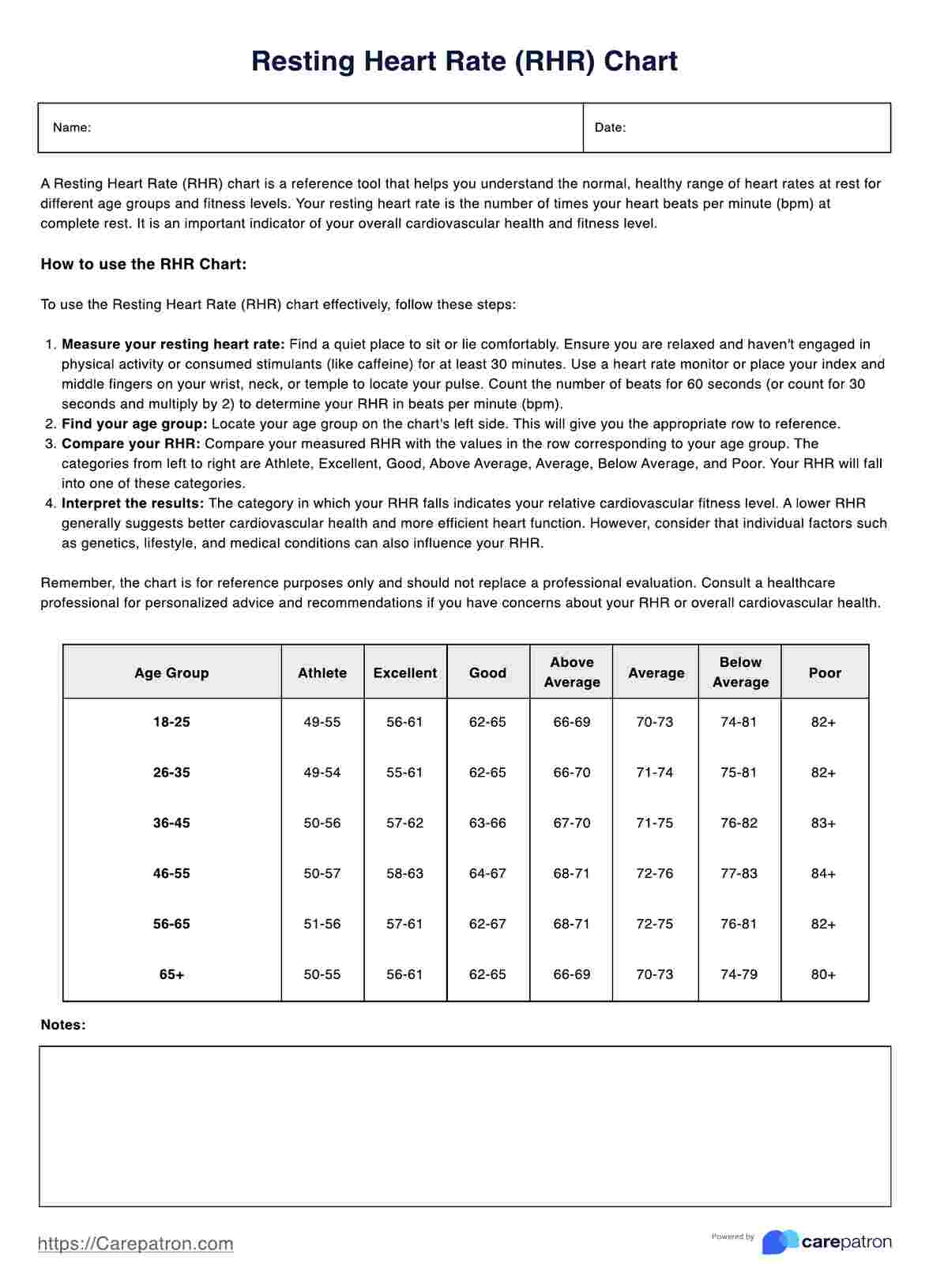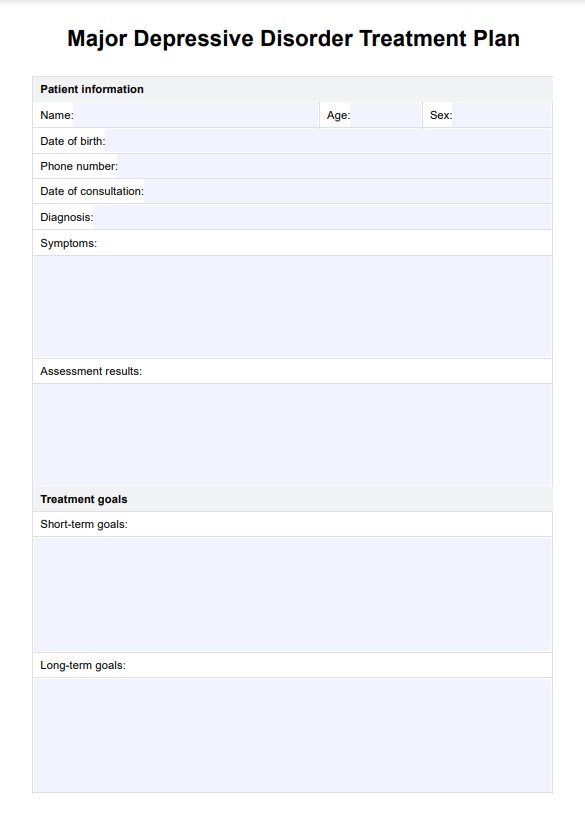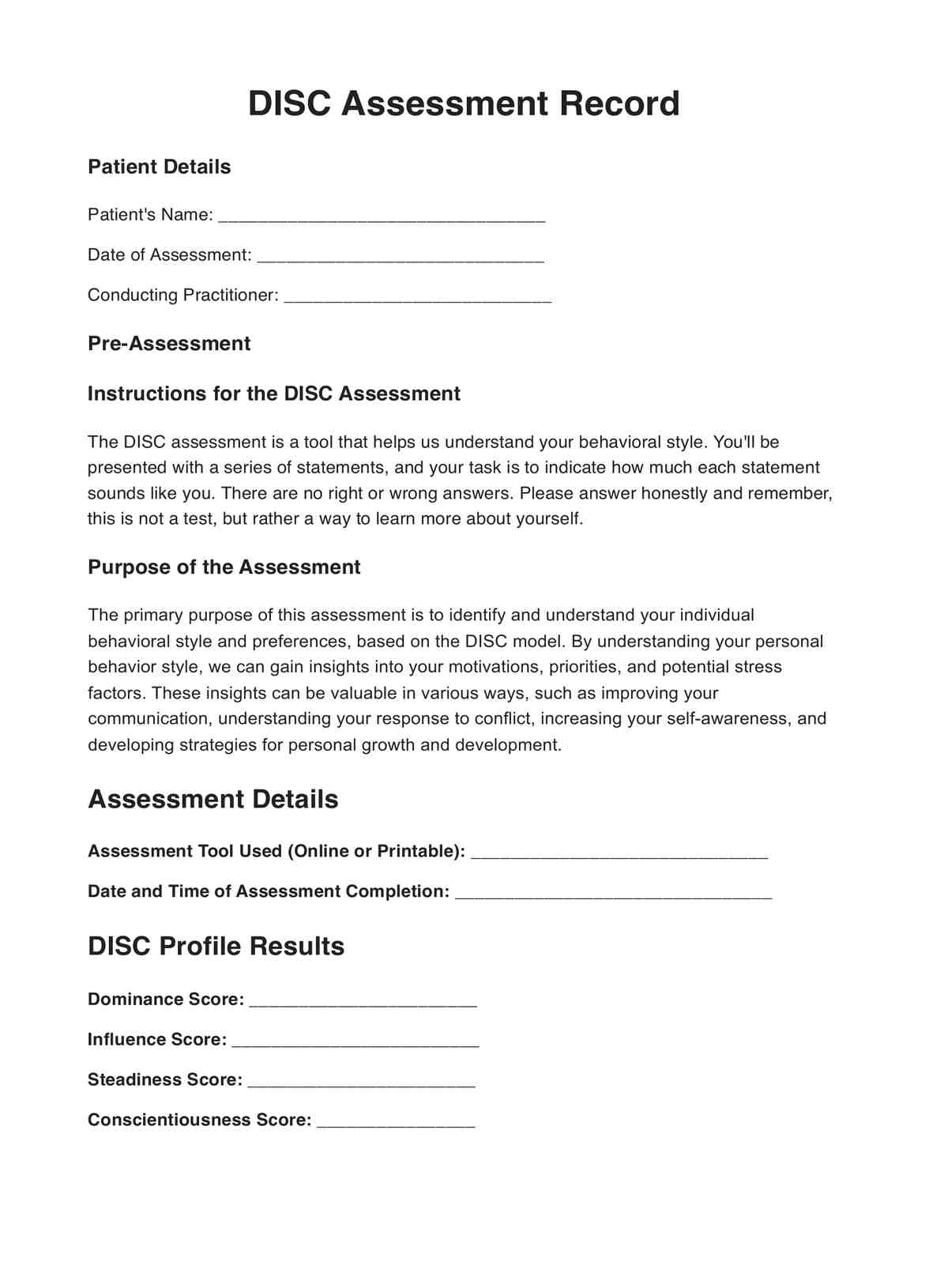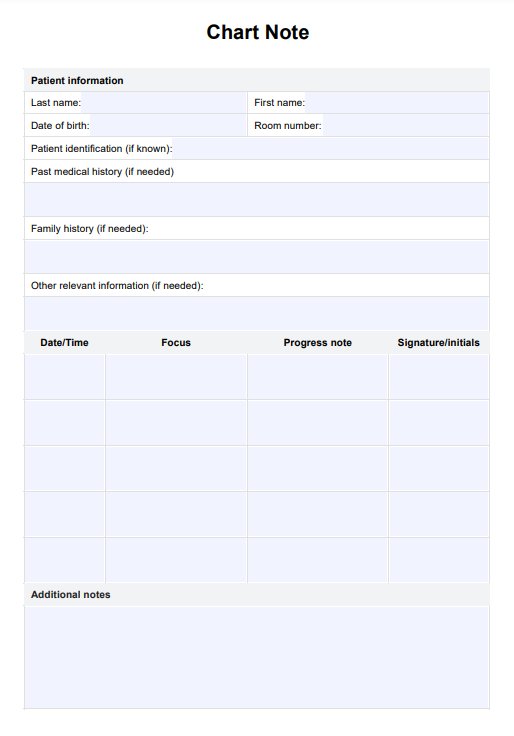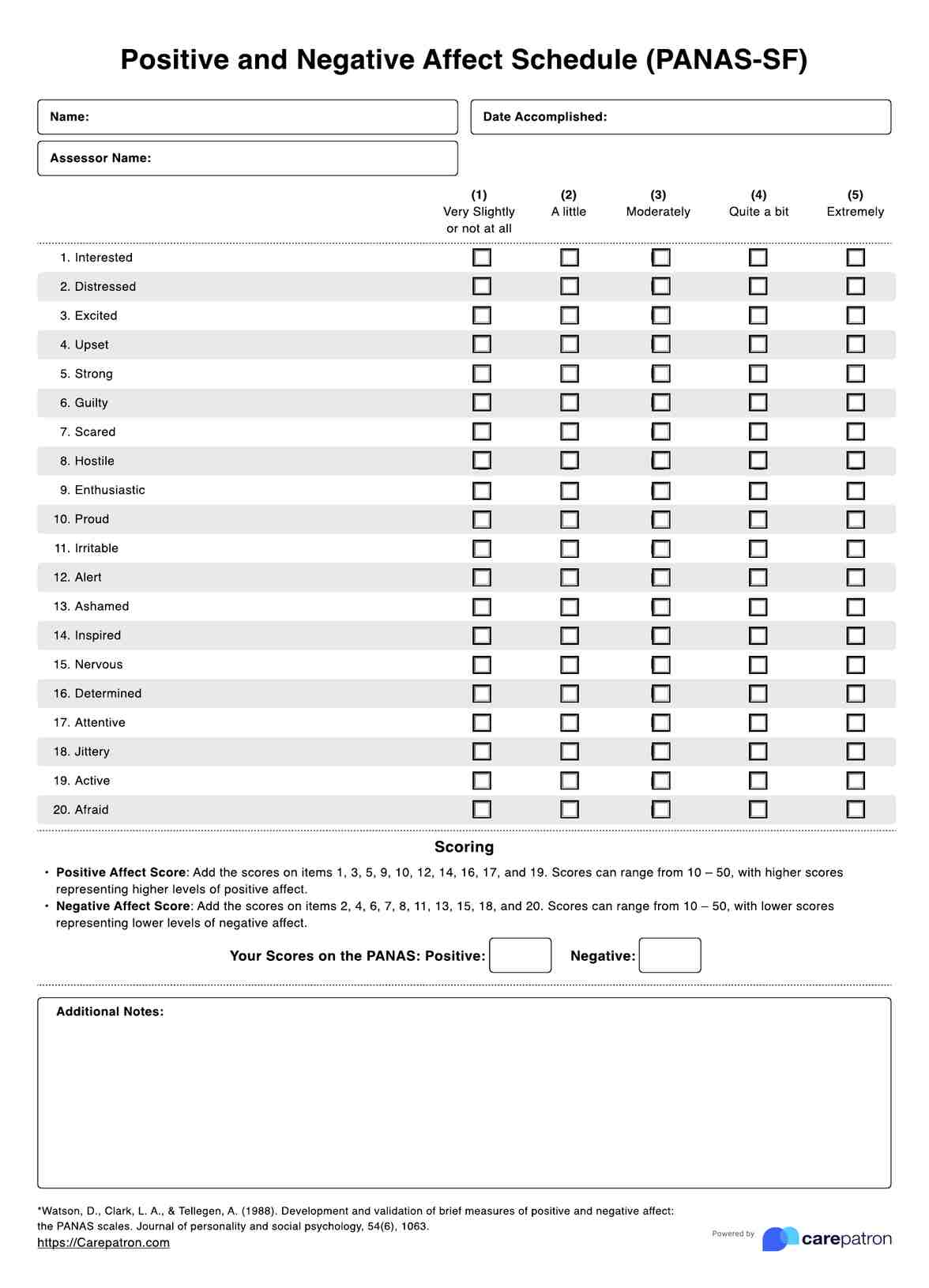Slocum Test
Discover the Slocum Test in this free PDF download. Understand how to measure your patient's knee joint stability effectiveness with this tool.


What is a Slocum Test?
The knee joint is an essential component of the human body, providing stability in daily activities such as walking, running, and climbing stairs. Its strength relies on several anatomical structures that provide support and proper function.
The main components of the knee joint are the bones, ligaments, tendons, meniscus, and other soft tissues. The bones provide a robust framework for movement and stability. The knee joint is strong and healthy when all these components support and enable movement. But if any of these components are damaged due to injury or disease, pain, and instability, it can result in difficulty with movement.
The Slocum Test is a physical examination that helps assess the anterolateral rotary instability or stability and tibial internal rotation of the knee joint. It's a modification of the Anterior Drawer Test. It evaluates the strength and stability of the ligaments and tendons, range of motion, flexibility, anterior cruciate ligament condition, and overall alignment or positioning of the knee joint. The test involves applying anterior force to the knee joint while assessing for signs of laxity.
When performing the test, the examiner applies specific forces and movements to the knee joint to assess its stability in various positions. These positions include anterior drawer, posterior drawer, and tibial internal rotation. By carefully evaluating the patient's responses and observing any signs of pain or instability, healthcare professionals can gather valuable information about the overall condition of the knee joint.
The Slocum Test benefits athletes and individuals who engage in activities that stress the knee joint, such as running, jumping, or pivoting. It helps to identify any potential weaknesses or vulnerabilities in the knee joint, allowing for appropriate treatment and preventive measures to be implemented.
Overall, the Slocum Test is a valuable tool in assessing knee joint stability and the integrity of the ACL. By incorporating it into a comprehensive evaluation process along with other clinical examinations and diagnostic tests, healthcare professionals can better understand any existing issues within the knee joint and provide appropriate care and treatment.
Slocum Test Template
Slocum Test Example
How does this Slocum Test work?
This free Slocum Test template provides instructions on how to perform the exam. It also has a section where you can write your findings for easy record-keeping. Follow these steps to get started:
Step One: Access the free test
Get a copy of the free Slocum Test using the link provided on this page or from the Carepatron app. You can also download it from our resources library.
Step Two: Discuss the exam with the patient
Take the time to explain the test to your patient. They must understand why you are performing this exam and what to expect.
Step Three: Perform the Slocum Test
You may refer to the steps listed on the worksheet when conducting the assessment. Ensure that you understand the instructions for each item on the test before administering this exam.
Step Four: Record your findings
Document your results on the worksheet and save this document for future reference. This will provide an easy way to track the patient's progress and compare any changes in their condition over time.
Slocum Test interpretation
The Slocum Test is a specialized examination designed to thoroughly evaluate the knee joint's anterolateral rotatory instability or stability and assess the integrity of the anterior cruciate ligament (ACL). This examination is based on the fundamental premise that if a patient can perform specific knee joint movements without experiencing pain or encountering any limitations, it indicates a normal level of stability.
A negative result on the Slocum Test would suggest sufficient stability in the knee joint, indicating that the ACL and other supporting structures are functioning properly.
On the other hand, a positive test result could indicate instability or damage in the knee joint or the tibial internal rotation. The result is positive if there is increased anterior tibial translation with tibial internal rotation. Another positive indicator is excessive movement on the knee's lateral aspect. In such cases, conducting further diagnostic tests, such as X-rays and other imaging studies, is essential to confirm the initial findings and accurately diagnose the underlying issue.
It is important to note that while the Slocum Test provides valuable insights into knee joint stability, it should be used as something other than a standalone diagnostic tool. Instead, it should be used with other clinical examinations and assessments to evaluate and determine any issues comprehensively within the knee joint.
When would you conduct this test?
This Slocum Assessment is essential for assessing knee stability and the anterior cruciate ligament. It can help diagnose and evaluate knee problems such as ligamentous tears, meniscal injuries, joint laxity, tibial internal rotation, and chondromalacia patellar. You may also conduct this test to:
- Determine knee stability: You may use the Slocum Test to determine the strength of joint ligaments. It can also help diagnose an anterior cruciate ligament tear or a medial collateral ligament injury.
- Assess knee range of motion: The Slocum Assessment helps assess how well a patient can bend and move their knee. It can also be used to evaluate range-of-motion limitations, difficulty with flexibility, anterior cruciate ligament injuries, and pain associated with movement.
- Identify muscle imbalances: The Slocum Test can identify muscle imbalances around the knee joint. It can help determine any areas of weakness or tightness, such as in the anterior cruciate ligament, that may indicate a need for further treatment.
- Evaluate treatment options: This exam can help you identify the best treatment options for knee and anterior cruciate ligament injuries. By assessing a patient's range of motion and flexibility, you can create an individualized treatment plan to address their needs.
You can incorporate the anterior drawer test into your evaluation process to evaluate knee joint stability and diagnose potential ACL issues. This test offers important information on the integrity of the ACL and helps guide effective treatment and recovery plans.
Who is this Slocum Test PDF for?
This Slocum Test PDF is intended for various healthcare professionals, including:
- Orthopedic surgeons diagnose and treat musculoskeletal issues, such as injuries to bones, joints, ligaments, tendons, and muscles. The Slocum Test PDF is particularly relevant for orthopedic surgeons as it focuses on assessing knee stability and aiding in diagnosing conditions.
- Primary care doctors can also use this template as a reference when evaluating patients with knee injuries. They may refer patients to orthopedic surgeons or physical therapists, and familiarity with the Slocum Test can assist them in making informed decisions.
- Physical therapists can utilize this template to evaluate a patient's knee stability and develop appropriate treatment plans. Physical therapists play a vital role as crucial contributors to the recovery process for musculoskeletal injuries.
- Sports medicine specialists who treat and prevent sports-related injuries will find this template invaluable. The Slocum Test is commonly employed in assessing knee stability, a prevalent concern among athletes.
- Rehabilitation specialists, working with patients to restore physical function and mobility after an injury or illness, can also benefit from this template. It is a valuable resource for evaluating knee stability and designing rehabilitation programs.
- Finally, students and researchers studying musculoskeletal injuries or knee stability can utilize this Slocum Test PDF as a valuable reference. It provides a comprehensive test overview, including instructions and result interpretation, facilitating educational purposes.
What are the benefits of this free Slocum Test PDF?
Our free Slocum Test PDF can help you quickly assess and diagnose knee injuries in the anterior cruciate ligament. Here are several advantages of this digital test:
- It's easy to use: The Slocum Test is simple. It only takes about five minutes to complete the assessment. It is also fully digital, so it's available anytime and anywhere at the click of a button.
- It's accurate: The Slocum Test was created by experienced medical professionals to ensure accuracy. It is reliable and can be used to accurately diagnose knee injuries like anterior cruciate ligament tears, sprains, or fractures.
- It helps patients make informed decisions: The Slocum Test can help your patient better understand their knee or anterior cruciate ligament injury and the steps needed for recovery. This information can help them make better decisions regarding treatment options.
- It's customizable: The Slocum Test can be customized according to the patient's needs. This means the test can be tailored to meet the individual's needs and situation.
Commonly asked questions
The patient is asked to lie down with their affected knee slightly bent to perform the test. The doctor will then apply anterior force with one hand and posterior force to the knee with the other. The patient is then asked to resist the applied pressure, providing feedback on pain or instability.
The Slocum Test measures the integrity of the ligaments and joint capsule in the knee. It also helps diagnose anterior cruciate ligament injuries and tears.
The Slocum Test is considered highly reliable, with reports of accuracy ranging from 82-97%.


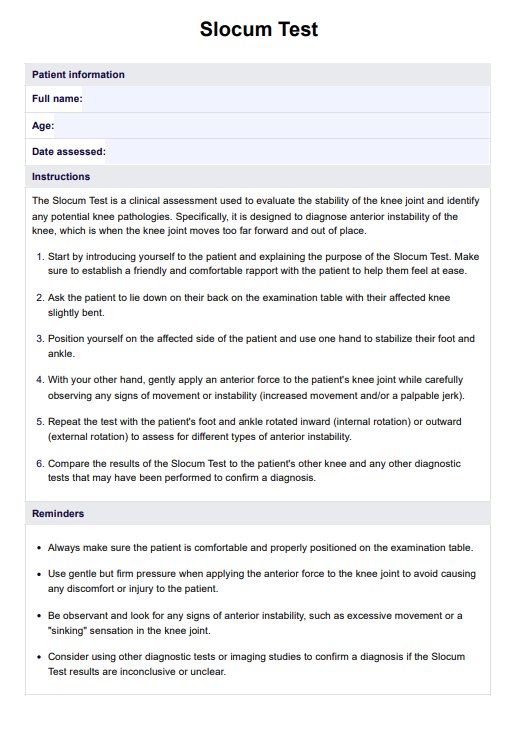
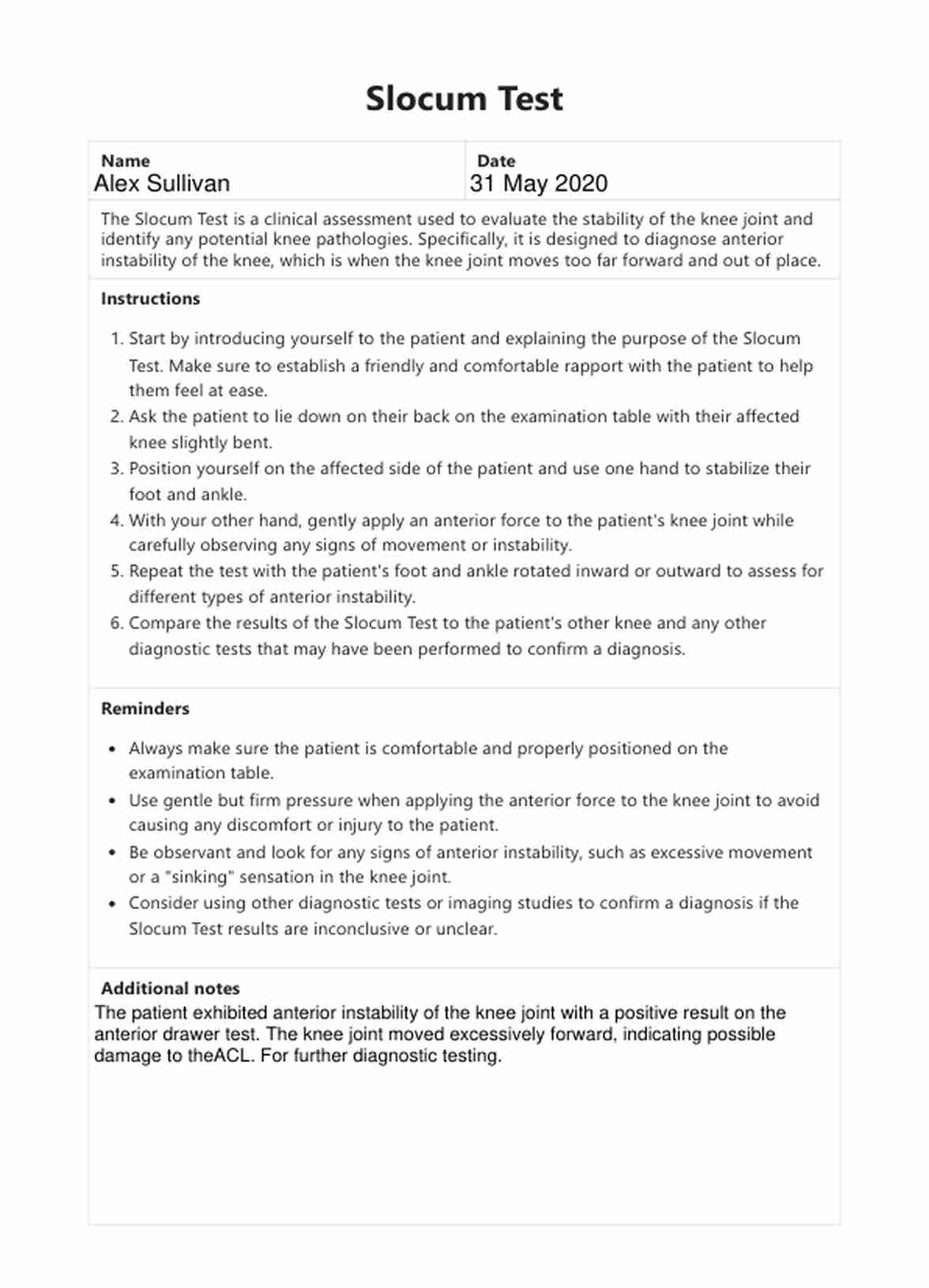

















-template.jpg)






















































































